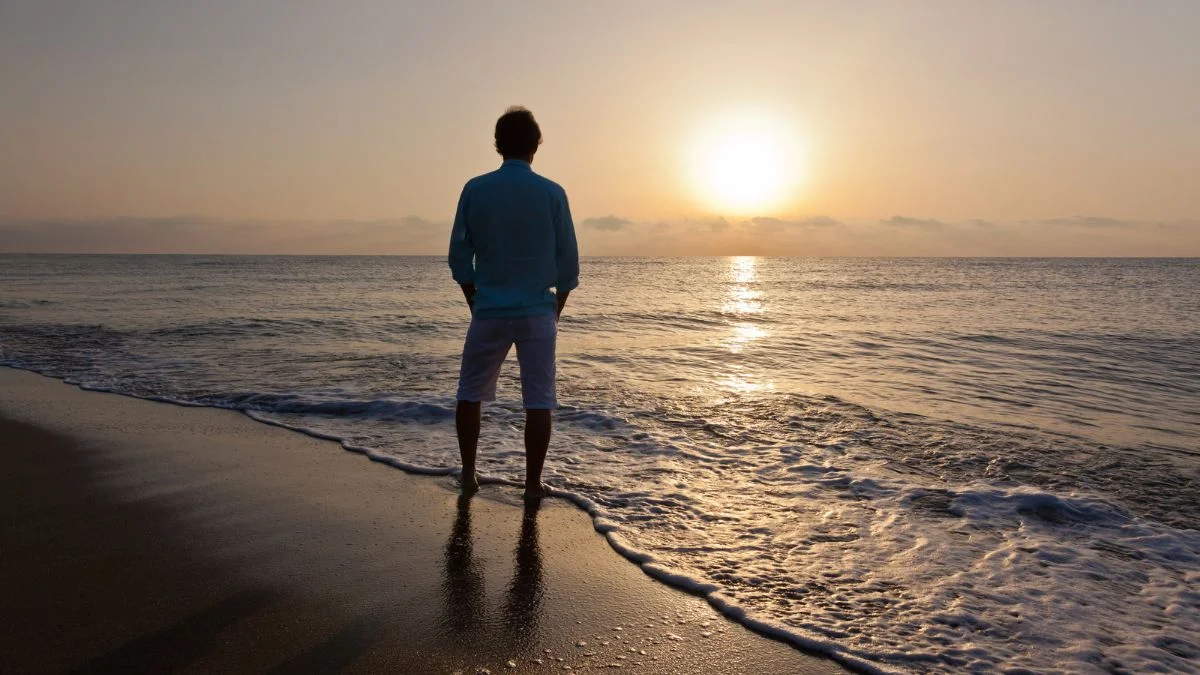Tips for Long-Term Solo Travel: From Months to Years

As participants in Amazon Associates and other programs, we earn from qualifying purchases. This comes at no additional cost to you. For more details, see our Affiliate Disclosure.
I’ve been on the road alone for quite some time now. Solo travel has taught me more than I ever expected, from understanding myself better to learning how to adapt in unfamiliar places. Over the years, I’ve picked up some useful tips that have made my long-term solo journeys smoother and more enjoyable. If you’re thinking of traveling solo for months or even years, these pointers might just be what you need.
Preparing Mentally: Setting the Right Mindset
Solo travel is as much an inner journey as it is an outer one. Mentally preparing yourself can make the difference between feeling overwhelmed and feeling invigorated. Start by understanding that solo travel will have its ups and downs. Embrace the fact that there will be days of pure joy and days where you might feel lonely or challenged. By setting realistic expectations and understanding the nature of solo travel, you’ll equip yourself to handle anything that comes your way.
Visualization can also be a powerful tool. Before you even set foot outside your door, take some time to visualize your journey. Think of potential challenges and how you’ll handle them. Imagine the people you’ll meet, the experiences you’ll have, and the growth you’ll undergo. By mentally preparing, you’re not only setting yourself up for success but also enhancing the depth and richness of your journey.
Picking Your Destinations: Safety and Comfort First
Your choice of destinations can significantly influence your solo travel experience. Research is key. Spend time understanding the culture, customs, and safety profile of the places you’re considering. Prioritize locations known for being friendly to solo travelers. Websites, blogs, and travel forums can be invaluable in getting firsthand accounts from other travelers about their experiences in specific places.
Your comfort is crucial. Remember, you’re in this for the long haul. Choose destinations that align with your interests and comfort levels. For instance, if you’re an introvert, bustling cities might be overwhelming, while serene countrysides or quieter towns could be more your speed. It’s also wise to start in places with good infrastructure and amenities. As you gain confidence, you can venture into more off-the-beaten-path locations.
Budgeting for the Long Haul
When it comes to long-term travel, budgeting is essential. It’s not just about how much money you have but how wisely you spend it. Start by setting a daily or monthly budget. Factor in accommodation, food, transportation, and unforeseen expenses. Remember, in some places, your money will stretch farther than in others. Prioritize countries or regions where the cost of living is lower if you’re working with a tighter budget or consider picking up a side gig such as teaching English with a Level 5 TEFL..
Track your expenses. It’s easy to lose track when you’re on the move. Consider using budgeting apps or a simple journal to record what you’re spending. Be prepared to adjust your plans if you find you’re going over budget. If you can, set aside an emergency fund, which can be a lifesaver in unexpected situations.
Packing Light: Essential Items Only
One of the most freeing things about solo travel is the simplicity it can offer, and packing light is central to this. Remember, every additional item you pack is something you’ll have to carry, potentially for months or years. Invest in quality, lightweight luggage that’s durable and easy to maneuver. When deciding what to bring, focus on versatility. Items that can be mixed and matched or serve multiple purposes are invaluable.
Consider the climates of the places you’re visiting. Layering is a great strategy, as it allows you to adjust to varying temperatures without overpacking. Don’t forget to leave some space in your luggage for souvenirs or items you might pick up along the way. Remember, many things can be bought locally, often at a fraction of the cost. So if you’re in doubt about whether to pack something, it’s often best to leave it behind.
Building Connections: Making Friends on the Road
Traveling solo doesn’t mean you’re alone. In fact, it can often be easier to meet new people when you’re by yourself. Hostels, local events, and group tours are excellent places to connect with fellow travelers. When joining group activities, you not only get to enjoy a shared experience but also have the opportunity to form bonds with like-minded individuals.
However, it’s not just about meeting other travelers. Engaging with locals can be one of the most rewarding aspects of solo travel. Simple gestures, like learning a few words in the local language or showing genuine interest in their culture, can go a long way. Remember, every interaction is an opportunity to build a connection, learn something new, and add another layer to your journey.
Handling Loneliness: Finding Comfort in Solitude
Traveling solo for extended periods will inevitably bring moments of loneliness. But it’s essential to understand that loneliness is a natural feeling and can serve as an opportunity for introspection. Use these moments to connect with yourself. Whether it’s through journaling, meditation, or simply reflecting, solitude can lead to profound self-discovery. Sometimes, being alone allows us to listen to our thoughts and feelings more attentively, leading to greater self-awareness.
However, if you find the weight of loneliness becoming too heavy, seek connection. Attend local events, join a class, or visit a cafe where locals hang out. Simply smiling or starting a small conversation can change the trajectory of your day. Remember, you’re never truly alone when traveling; the world is full of potential friends just waiting to be met.
Staying Safe: Tips for Solo Travelers
Safety should always be a priority, especially when traveling alone. Always trust your instincts. If something doesn’t feel right, it probably isn’t. Be cautious about sharing personal information with strangers and avoid flaunting valuables. Staying in well-lit areas, especially during the night, can help deter potential threats.
When choosing accommodation, read reviews and prioritize places known for their safety. Staying in central locations, even if slightly more expensive, can often be safer than remote areas. It’s also a good practice to let someone know your plans, whether it’s a family member back home or the staff at your accommodation. Regular check-ins can provide both you and your loved ones with peace of mind.
Keeping in Touch: Maintaining Relationships from Afar
While solo travel offers unparalleled freedom, it’s essential to remember the connections and relationships you have back home. Regular communication with loved ones can provide a grounding effect, reminding you of your roots. Thanks to technology, keeping in touch is easier than ever. Apps like WhatsApp, Skype, or Zoom can bridge the distance, making it feel like you’re just a call away.
However, it’s not just about frequency but quality of communication. Share your experiences, the good and the challenging. Let your loved ones in on your journey, and they’ll likely feel more connected to your adventures. On the flip side, take interest in what’s happening in their lives too. This mutual exchange helps maintain strong bonds, even across vast distances.
Adapting to New Cultures: Respect and Open-mindedness
Encountering diverse cultures is one of the true joys of travel. However, it also comes with a responsibility to approach these experiences with respect and an open mind. Take the time to learn about local customs, traditions, and etiquette. This not only prevents unintentional offenses but also enriches your understanding of the places you visit.
Being non-judgmental is key. Remember, just because something is different doesn’t make it wrong. Embrace the differences, and you’ll find that they often lead to the most memorable and transformative travel experiences. When in doubt, observe and ask questions. Locals usually appreciate genuine curiosity and are often more than happy to share their culture with those eager to learn.
Taking Breaks: Recognizing When to Rest
Traveling for months or even years is exhilarating, but it can also be exhausting. It’s a marathon, not a sprint. One of the most important lessons I’ve learned on the road is the importance of listening to my body and mind. If you’re feeling fatigued, it might be time to slow down. It’s okay to take a day off from exploring to just relax, read, or watch a movie. Remember, it’s your journey, and there’s no right or wrong way to travel.
Additionally, consider taking longer breaks in certain places. If a location resonates with you, stay a while. Rent an apartment for a month, enroll in a class, or dive into the local scene. These extended pauses not only provide rest but can also offer deeper connections to a place and its people.
Staying Healthy: Physical and Mental Well-being
Your health is your most valuable asset while traveling. Physically, it’s crucial to pay attention to what you eat and drink. In unfamiliar places, opt for bottled water and ensure food is cooked thoroughly. Carrying a basic first-aid kit and necessary medications can be a lifesaver in unexpected situations. Additionally, try to incorporate regular exercise, even if it’s just walking or simple stretches in your room.
Mentally, long-term solo travel can be both rewarding and challenging. Prioritize self-care. This can mean different things for different people – meditation, journaling, reading, or simply taking a day off. If feelings of anxiety or depression persist, don’t hesitate to seek professional help or counseling. Your mental well-being is just as important as your physical health.
Documenting Your Journey: Capturing Memories for a Lifetime
Our memories are precious, but over time, they can fade. Documenting your journey allows you to capture those fleeting moments and emotions. Keeping a journal is a fantastic way to record not just what you did, but how you felt. It serves as a personal time capsule, allowing you to relive moments years down the line.
In this digital age, photography and videography have become more accessible than ever. Take pictures, not just of landscapes but of people, of daily life, of the mundane. These often end up being the most treasured snapshots. If you’re artistically inclined, sketching or painting can also be a beautiful way to document your travels. Whatever method you choose, remember it’s not about creating perfect records, but authentic ones that resonate with your experience.





